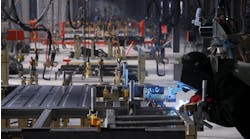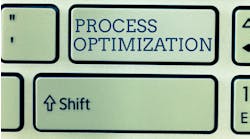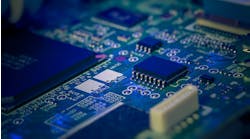By Jonathan Weiss, Software AG vice president of emerging technologies
Manufacturing success today depends largely on setting—and meeting—the right set of goals and objectives. This means taking a hard look at your organization's key performance indicators (KPIs) and moving them beyond traditional production and costs accounting to true, holistic measures of success.
To achieve this, however, manufacturers must first make their move into the Internet of Things or the Industrial Internet of Things (IoT/IIoT). This step allows companies to pull in data from across the entire design and delivery process, which is essential to properly measure success in this age of digital manufacturing.
Making this digital transition can be its own challenge, though. It's common that I see customers that have connected an asset, or have begun to collect data (maybe they've even been collecting data for years) and they insist that they are "doing IoT." The reality is that there is nothing new about collecting data and if that is where your journey ends, that's ok, but it's probably not truly IoT.
Through my experiences, I have identified five key stages an IoT/IIoT project will go through as it matures and evolves into what I consider to be an end-to-end or omnichannel solution. Arguably the most important piece to this is that as you evolve and progress through the stages, your ROI grows (think of it as a maturity curve, more on this later).
Stage 1 - Connect
Device and asset connectivity is the first step to any IoT project. Getting connected is often one of the most difficult tasks and requires a lot of thought as you plan your journey. These days, there are so many things to consider when connecting your devices: What kind of connectivity do we need? Is WiFi or Bluetooth the best option? What the heck is LoRa and Sigfox? Should I send data over MQTT or REST?
In this stage, it is critical that you think about the following:
-
What mode of connectivity (WiFi, cellular, etc.) is appropriate for my business needs?
-
What protocol(s) (REST, MQTT, MTConnect, etc.) should we use to transfer data from the asset to the IoT platform?
-
Will I need to support bi-directional communication (messaging not only to the platform but also back to my device)
-
How will you manage these assets once they are connected (firmware / software updates, retrieving logs, etc.)?
The list of things to consider is virtually never-ending, but keeping these four items in mind will not only help you pick the proper technology, they will ensure you stay on track as you implement it.
ROI (<15%)—Getting connected is where you will see your first phase of ROI. Although it is a critical step, on the surface, getting connected generally does very little to achieve your end-goal. Of course, you can't do any of this without getting connected, so the value towards your project is invaluable, however the actual business return at this stage is negligible.
Stage 2 - Collect & visualize
Selecting the proper protocol (as mentioned above) is the first step towards collecting data from your connected assets. Today, the most widely used IoT protocol is arguably MQTT, as it has become the standard over the last several years. There are, however, newer technologies like LWM2M that are quickly gaining momentum. Also, don't forget about industrial protocol support. It's becoming more and more common that industrial customers want to ingest data over OPCUA, Modbus and other protocols, directly into their IoT solution.
It is important you align with industry standards, not only to ensure a seamless integration with the plethora of solutions on the market, but to keep your implementation up-to-date by leveraging the industry's best practices.
Once you have established a connection and settled on a protocol, you're almost ready to begin streaming data into your IoT solution. Before you can do that, though, you need a place to store your data. The most common approach to data storage in IoT is to leverage a NoSQL Database, like Mongo DB or one of Amazon's data storage services (S3, Glacier, etc.). In an IIoT application, you may also come across on-prem and cloud-based historians. It's important to understand the implications of integrating these historical databases (largely due to the volume of data) with your IIoT platform. If it's going to be cloud based, I would suggest giving this serious consideration as running historian-style data in the cloud can become extremely expensive.
Visualizing data has become a commodity, but it is still something that needs to be put in place. Selecting the right technology to view the data is critical. Some solutions will not support your data storage mechanisms and/or the ability to display real-time results without forcing page refreshes. Given the mobile world we live in, it is also important that the offering is fully responsive to ensure it works on any device. For these reasons, I find it to be important to address the connectivity and storage elements prior to selecting your visualization technology.
ROI (~25%)— The return on your project begins to pick up momentum now that you have machines connected and you are collecting data. You now have real-time or quasi real-time visibility into your asset's performance and data points. This is a pivotal moment in your project; you now have enough information to make reactionary decisions and enough data to build some nice visualizations. This, however, is far from the true ROI potential.
Stage 3 - Analyze
Now that you have begun collecting and visualizing your data, it's time to put it to work! The process of getting connected, storing data and viewing it in real-time is far from new, but newer technologies and IoT applications allow you to leverage that data more than ever before. In the last decade, we have seen an evolution of the way we leverage our industrial and consumer data. This evolution has taken us from simple data collection to being able to derive actionable insights from our understanding of the information; a critical piece of IoT.
To achieve this, and actually get actionable insights from your data, you must ensure your data is accurate, clean, and reviewed by subject matter experts in your field. Quite often, we let R&D and product teams decide what data is relevant to drive these insights, but the truth is that no one knows better than the folks that live and breathe it every day. For example, if you are building a manufacturing application and you want to generate alarms based on certain conditions, it is best to ask the people whom are most familiar with the process itself how and when alarms should be generated. Sounds like a "no-brainer" but I often see this overlooked.
If your data is accurate, clean and confirmed to be relevant by the experts, then you are in a fantastic position to leverage it to start gaining a deep understanding of the process, which will ultimately lead you to actionable insights. This is often achieved through AI and machine learning. Essentially, you can use this data to build an analytic model that can be used for predictive use cases that can help you start drawing conclusions based on new information you are receiving from your assets. Of course, the predictive angle is just one use case, but I mention it because it seems to be the most prevalent in the industry.
ROI (~50%)—By analyzing your data, you are now going to see significantly more ROI because you are not only seeing data in real-time and being reactionary, but you are obtaining insights that you never knew existed. This is the true beginning of a business transformation and allows you to proactively respond to issues and even address them before they become true "problems."
Stage 4 - Integrate
A question I hear a lot in the IoT space is "so what?" I've connected an asset — so what? I can see some data — so what? I understand what the data is telling me< — so what? Well, the "Integrate" stage aims to solve the "so what?" in IoT projects.
Imagine you have an asset on an assembly line and you want to predict if it is going to go down during production. To make this prediction, you hook up a bunch of sensors that monitor things like temperature, vibration, fluid levels and any other critical component that may hinder its performance. You train some models and you can now, with high confidence, predict if that asset is going to fail based on your sensor data. Then, all of a sudden, material doesn't get to the asset and it suffers an outage due to an external factor. How could you have predicted that by only monitoring sensor data on the asset? You couldn't.
As you can see, integrating your IoT platform with the rest of your enterprise systems can give you the holistic view that is needed to make accurate predictions and draw effective conclusions. This level of integration also works the other way; it allows you to see the impact of your IoT assets on the rest of your enterprise. For example, if you have an integration with your order fulfillment system and one of your machines goes down in production, the integration can tell you if there is going to be an impact to shipping the order on time.
ROI (~75%) — Integrating your IoT platform with the rest of your enterprise helps you drive actionable insights like never before. This allows you to truly predict problems in production, understand implications in order fulfillment, create a holistic view across your entire enterprise and so much more. Without planning to enrich your IoT data with your disparate enterprise systems, and vice versa, you will be missing out on the potential of your IoT initiative.
Stage 5 - Automate
The final step to truly doing IoT/IIoT is to automate your businesses processes and become truly autonomous. When you predict that an asset is going to fail, what are you going to do about it? Implementing an automation layer will leverage your actionable insights and your enterprise integration to automate workflows within your organization. This removes the need of having to call field services or manually open a ticket for that failing asset. Now, you can automate the process and address concerns before they become real problems.
Closed-loop automation at the edge can also make a huge impact to your business. This allows you to monitor data, act on insights and execute operations without ever communicating with the cloud. Not only is this ideal for secure environments, but it ensures there will be no latency issues with decision making. If you have equipment in the field that needs to make real-time decisions and take instant actions on that data, this is the route to take. If you have a critical piece of machinery that needs to make split second decisions, latency and cloud connectivity is a major concern. For example, if it needs to stop operating, immediately, when a threshold is breached, you would want to analyze the data and execute a process all within the same infrastructure of the asset to ensure the real-time aspect is sustained.
ROI (~100%)—Automating the interactions of your IoT platform and enterprise systems will open a door to tremendous opportunities for your organization. From reducing maintenance costs to increasing customer experience, the possibilities are endless. This is the last and final step to achieving maximum ROI and truly transforming your enterprise.
On paper, this is a very straight-forward and easy approach, but let's face it, IoT/IIoT is no simple task. There are many moving parts and pieces to this ever-changing puzzle. A tremendous amount of new technologies, connectivity options, protocols and coding languages can make it very difficult to determine the path that is best for you. But there is hope! Starting your project with a strategy and following a methodical approach on your execution can greatly increase your chances of success.


